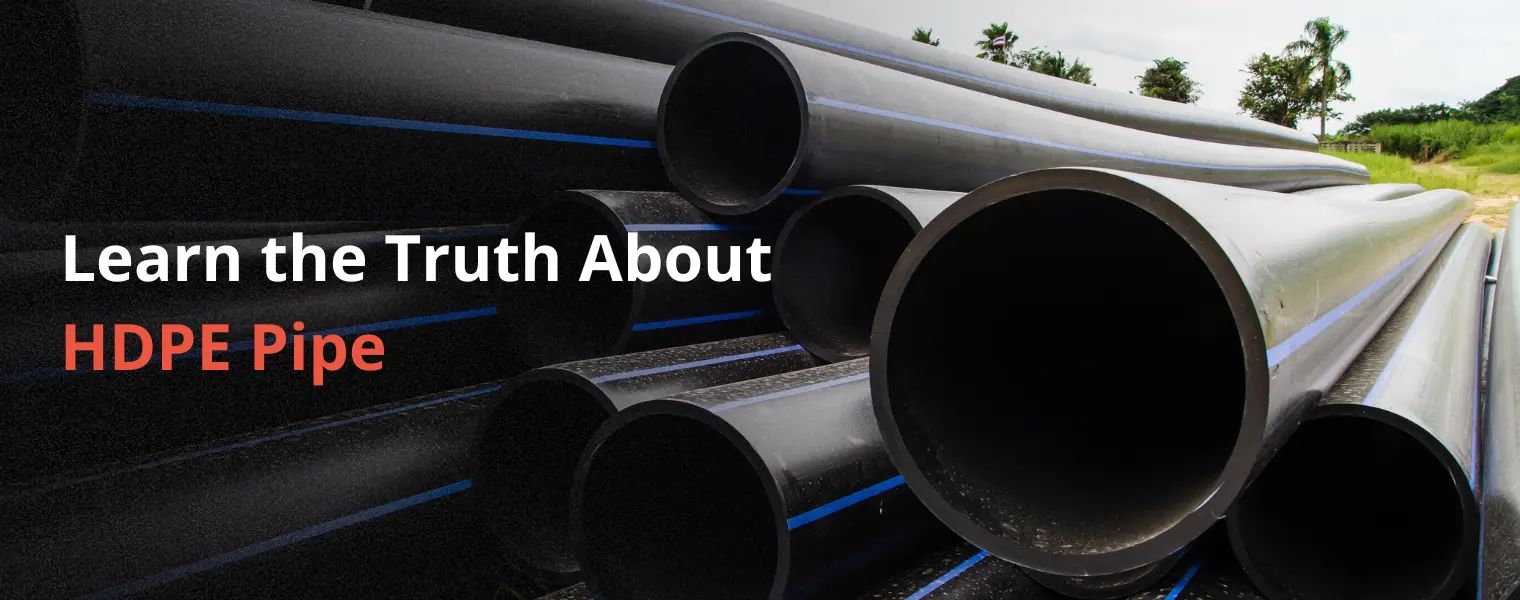
The efficiency and effectiveness of utility infrastructures are dependent on the quality of piping. In these projects, high-density polyethylene (HDPE) pipes are most commonly used because they can withstand high temperatures and pressure while also being weather resistant. However, the quality of the available brands varies depending on the HDPE pipe manufacturers. Here's everything you need to know.
HDPE (High-Density Polyethylene) pipe is a versatile and widely used material in various industries, known for its durability, flexibility, and resistance to corrosion. Whether you are involved in construction, water management, or industrial applications, understanding the truth about HDPE pipe is crucial. In this blog post, we will explore key facts about HDPE pipe, clarify its relationship with PE (Polyethylene), discuss its strength compared to other materials, delve into different types of HDPE pipes, examine its safety for drinking water, and explain the joining methods.
HDPE pipe is a thermoplastic pipe made from high-density polyethylene material. It is flexible, lightweight, and possesses excellent chemical resistance properties. HDPE pipe is known for its long service life, resistance to impact and abrasion, and ability to withstand harsh environmental conditions. Its versatility makes it suitable for a wide range of applications, including water supply, irrigation, gas distribution, industrial processes, and more.
HDPE is a type of PE (Polyethylene) material. PE is a general term that encompasses various types of polyethylene, including HDPE. HDPE is distinguished by its high density, making it more rigid and strong compared to other forms of PE. Other types of PE, such as LDPE (Low-Density Polyethylene) and MDPE (Medium-Density Polyethylene), have different properties and are used in different applications.
HDPE is considered stronger than other forms of PE due to its higher density and molecular structure. Its strength and toughness make it suitable for demanding applications where durability is crucial. HDPE pipe's exceptional strength and resistance to cracking or breaking ensure reliable performance even under high pressure or heavy loads.
HDPE pipes are available in various types and classifications to meet specific application requirements. Some common types include:
• PE 80: Suitable for low-pressure applications such as irrigation, water supply, and sewage systems.
• PE 100: Designed for high-pressure applications, including gas distribution and water supply in urban areas.
• SDR (Standard Dimension Ratio) pipes: Categorized based on their size and wall thickness, indicating their pressure rating.
The selection of the right type of HDPE pipe depends on factors like operating pressure, temperature, and intended application.
Yes, HDPE pipe is safe for drinking water applications. It is widely used in water supply systems around the world due to its inertness, which prevents the leaching of harmful chemicals into the water. HDPE pipe is approved for potable water use by regulatory authorities and meets stringent quality and safety standards.
HDPE pipes can be joined using various methods, including:
• Butt Fusion: Involves heating the pipe ends and then pushing them together under pressure to create a fused joint. This method provides a seamless and strong connection.
• Electrofusion: Uses specialized fittings with embedded heating elements. When energized, the fittings melt and fuse with the pipe, forming a secure joint.
• Electrofusion: Uses specialized fittings with embedded heating elements. When energized, the fittings melt and fuse with the pipe, forming a secure joint.• Mechanical Couplings: Utilize mechanical fittings or compression couplings to join HDPE pipes. These fittings provide a quick and convenient connection without the need for heat or specialized equipment